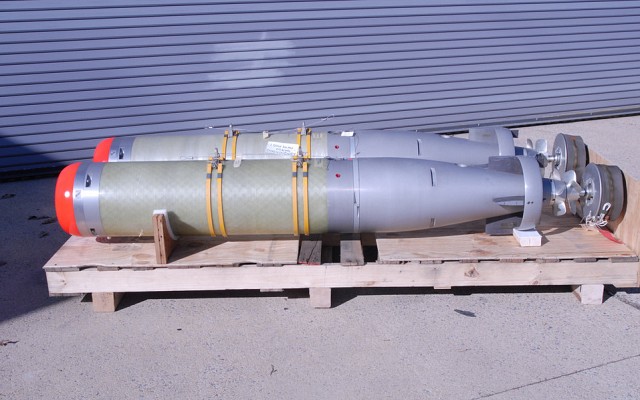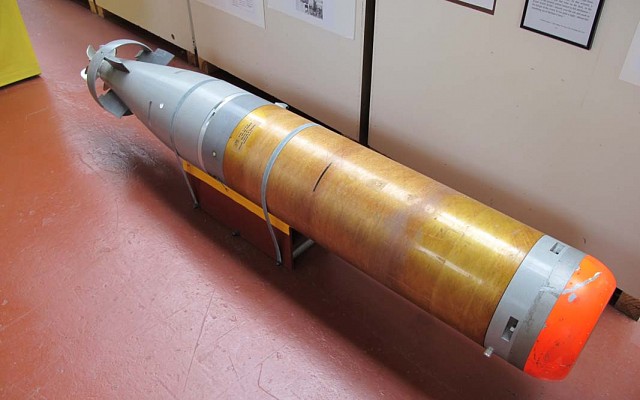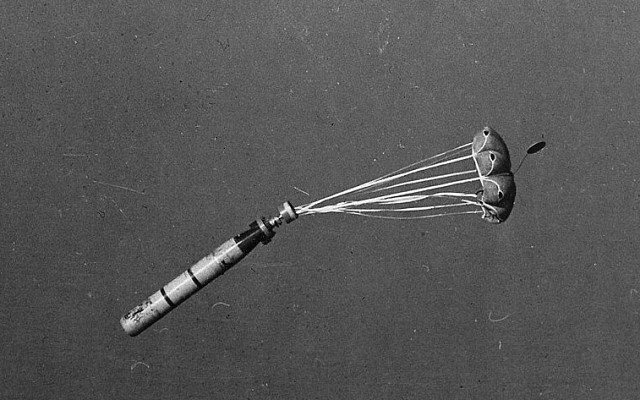Mk 44
Overview
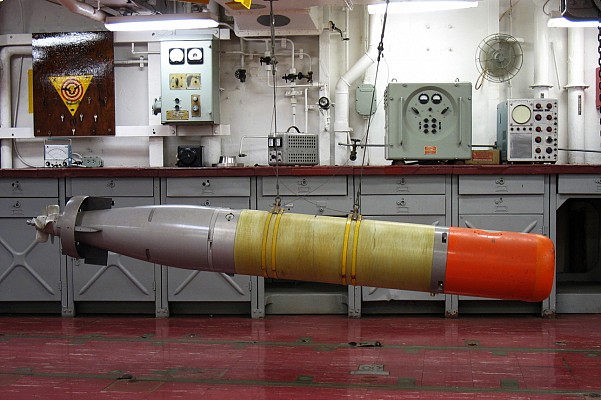
Mk 44
Mk 44 lightweight torpedo on display on a museum ship.
Source: Peter E -
© Copyright lies with original owner
1958 - ? (Mod 1)
United States - NOSF
United States - AMF
Japan
KT44 (South Korean production)
South Korea
Description
Introduction
The Mk 44 is an early Cold War era lightweight torpedo of US origin. It was developed after World War 2 to counter the increased threat of submarines to surface vessels.
Design
The Mk 44 is divided into four sections. The forward section contains the active sonar and warhead. This is followed by the guidance section and battery compartment. The rear sections houses the electric motor twin contra-rotating propellers and rudders. When dropped from aircraft of anti-submarine missiles a retarding parachute is attached to the rear.
Guidance
Upon entering the water of the target zone the Mk 44 enters a circular search pattern while spiraling deeper. The Mk 44 has an active sonar system made up of radio tubes.
Firepower
The Mk 44 has a range of 5.5 km and travels at a speed of 30 knots. A 34 kg warhead with impact fuse is fitted. In the 1970's or 1980's an upgrade package with shaped charge warhead was offered.
Platforms
The Mk 44 is a lightweight torpedo that can be launched by various platforms. Surface vessels can launch it from triple Mk 32 launchers. Maritime patrol aircraft and helicopter can drop it using a retarding parachute. A third type of launch platform are anti-submarine missiles such as the ASROC and Ikara.
Users
The Mk 44 was acquired in large numbers by the USA with over 10.000 acquired. The Mk 44 was quickly superseded in production by the more capable Mk 46. The Mk 44 was exported to various US allies and was also produced under license. In many nations Mk 44 and Mk 46 remained in use at the same time for several decades.
Media
Details
Related articles
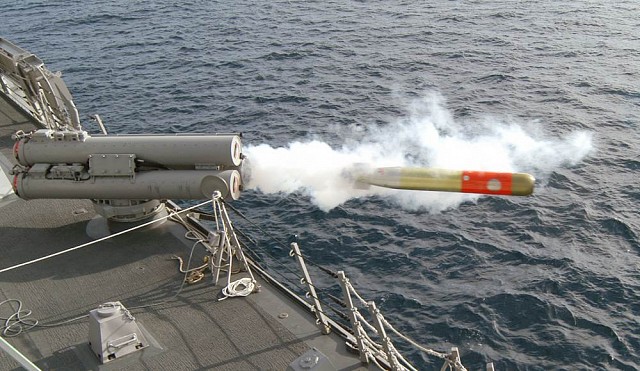
Mk 46
The Mk 46 was developed as a more capable successor to the Mk 44. The Mk 46 can reach higher speeds and was introduced to counter the new and faster nuclear powered submarines.
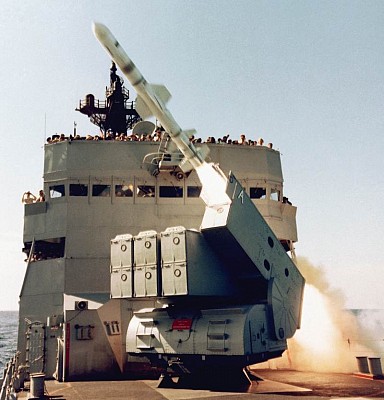
RUR-5 ASROC
The conventional variant of the RUR-5 ASROC anti-submarine rocket was originally fitted with the Mk 44 torpedo as its warhead. At a later stage the Mk 46 became the main type of payload.
